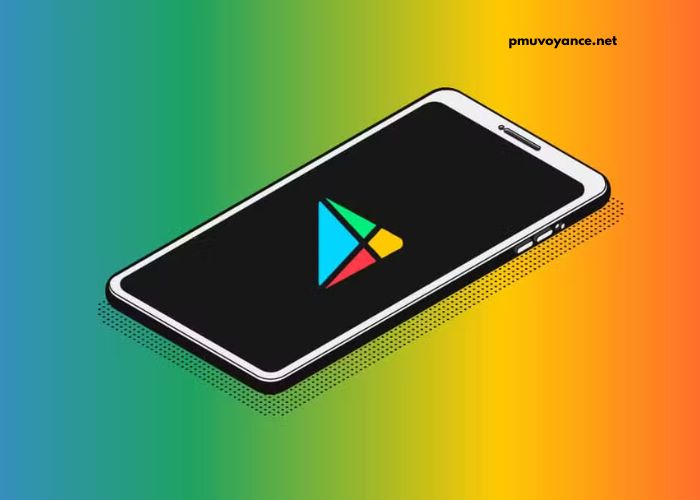In today’s fast-paced world, the integration of technology into our daily lives has transformed how we live, work, and interact. Smart gadgets, ranging from wearable devices to home automation systems, have become integral to enhancing everyday living. These devices not only improve efficiency and convenience but also contribute to better health, security, and sustainability. In this article, we will explore the myriad ways smart gadgets enhance our everyday lives and their potential impact on the future.
The Rise of Smart Gadgets
The proliferation of smart gadgets can be attributed to the rapid advancement of technology and the widespread adoption of the Internet of Things (IoT). Smart gadgets are devices that connect to the internet and can be controlled remotely or interact with other devices. Examples include smart speakers, fitness trackers, smart thermostats, and home security systems.
The concept of smart technology is not new; however, its accessibility and affordability have surged in recent years. The rise of smartphones has played a pivotal role in popularizing smart gadgets, serving as a central hub for controlling various devices. As consumers increasingly seek convenience, personalization, and efficiency, the demand for smart gadgets continues to grow.
Enhancing Home Living
One of the most significant areas where smart gadgets have made a profound impact is in home living. Smart home devices allow homeowners to automate and control various aspects of their living environment, enhancing comfort, convenience, and security.
Smart Lighting
Smart lighting systems enable users to control their home’s lighting remotely through smartphones or voice commands. These systems allow homeowners to customize the brightness and color of their lights, set schedules, and even create mood lighting for different occasions. For instance, smart bulbs can be programmed to gradually brighten in the morning, simulating a natural sunrise, which helps users wake up more gently.
Moreover, smart lighting systems can contribute to energy efficiency. Users can turn off lights remotely or set timers to ensure that lights are not left on when they are not needed. This not only reduces energy consumption but also lowers electricity bills.
Smart Thermostats
Smart thermostats are another essential component of smart homes. These devices learn users’ heating and cooling preferences over time and adjust the temperature accordingly, optimizing energy usage. For example, a smart thermostat can lower the heating or cooling when no one is home, saving energy without sacrificing comfort.
Many smart thermostats can be controlled remotely, allowing users to adjust the temperature from their smartphones. This feature is particularly useful for individuals with busy lifestyles who want to ensure their homes are comfortable when they arrive.
Smart Security Systems
Home security has evolved significantly with the advent of smart gadgets. Smart security systems include features such as smart cameras, doorbell cameras, and motion sensors, all of which can be monitored and controlled remotely.
With a smart security system, homeowners can receive real-time notifications when motion is detected or when someone rings the doorbell. This instant communication provides peace of mind, allowing users to check their security cameras remotely and ensure their homes are safe, even when they are away.
Additionally, smart locks can enhance home security by allowing users to lock or unlock their doors remotely. This is especially beneficial for those who frequently have visitors or service personnel entering their homes.
Improving Personal Health and Fitness
In addition to enhancing home living, smart gadgets play a crucial role in personal health and fitness. Wearable devices and health monitoring gadgets have transformed how individuals track their health and fitness goals.
Fitness Trackers
Fitness trackers are among the most popular smart gadgets in the health and wellness sector. These devices monitor various metrics, such as steps taken, heart rate, calories burned, and sleep patterns. By providing real-time data, fitness trackers encourage users to stay active and maintain a healthy lifestyle.
Many fitness trackers also integrate with smartphones and health apps, allowing users to set fitness goals, track progress, and receive personalized recommendations. This level of interactivity makes it easier for individuals to stay motivated and accountable to their health and fitness objectives.
Smart Health Monitoring Devices
Smart gadgets have also revolutionized health monitoring, enabling individuals to manage chronic conditions effectively. Devices such as smart blood pressure monitors, glucose meters, and heart rate monitors provide users with instant feedback on their health.
For instance, individuals with diabetes can use smart glucose monitors to track their blood sugar levels throughout the day. These devices often sync with smartphones, allowing users to log their readings and share them with healthcare providers. This integration fosters better communication between patients and doctors, ultimately leading to improved health outcomes.
Telehealth Solutions
The COVID-19 pandemic has accelerated the adoption of telehealth solutions, making it easier for individuals to access medical care from the comfort of their homes. Smart gadgets such as digital stethoscopes and remote monitoring devices enable healthcare professionals to diagnose and monitor patients remotely.
Telehealth services offer convenience and accessibility, particularly for individuals with mobility issues or those living in remote areas. Patients can consult with healthcare providers without the need to travel, reducing wait times and improving overall healthcare delivery.
Streamlining Daily Tasks
Smart gadgets also streamline daily tasks, making everyday activities more efficient and manageable. From cooking to grocery shopping, these devices save time and effort.
Smart Kitchen Appliances
Smart kitchen appliances, such as smart ovens, refrigerators, and coffee makers, are designed to simplify cooking and food preparation. For instance, smart ovens can be preheated remotely, allowing users to start cooking before arriving home.
Many smart kitchen appliances are equipped with voice control features, enabling users to follow recipes hands-free. Additionally, smart refrigerators can track inventory, remind users of expiration dates, and suggest recipes based on available ingredients.
Voice-Activated Assistants
Voice-activated assistants, such as Amazon’s Alexa, Google Assistant, and Apple’s Siri, have become ubiquitous in smart homes. These assistants can perform a variety of tasks, from setting reminders and playing music to controlling smart devices and providing weather updates.
Voice-activated assistants enhance convenience by allowing users to multitask and complete tasks without needing to use their hands. This feature is particularly beneficial for individuals with mobility challenges or those who are busy with household chores.
Smart Grocery Shopping
Smart gadgets have also transformed grocery shopping. Smart grocery apps allow users to create shopping lists, find recipes, and even order groceries online for delivery or pickup. Some smart fridges can automatically add items to the shopping list when they run low, ensuring users never forget essential ingredients.
Furthermore, barcode scanning technology enables users to keep track of pantry items and expiration dates. This level of organization not only saves time but also reduces food waste.
Enhancing Sustainability
As concerns about climate change and environmental sustainability continue to grow, smart gadgets are playing a crucial role in promoting eco-friendly practices. These devices help individuals and families reduce their carbon footprints and make more sustainable choices.
Energy Management Systems
Smart energy management systems monitor and optimize energy consumption in homes and businesses. These systems can analyze usage patterns and suggest ways to reduce energy waste, such as adjusting heating and cooling settings or turning off devices when not in use.
By providing real-time feedback on energy consumption, smart gadgets empower users to make informed decisions about their energy usage. This not only leads to cost savings but also contributes to a more sustainable lifestyle.
Water Conservation Devices
Smart gadgets are also available to promote water conservation. Devices such as smart irrigation systems can automatically adjust watering schedules based on weather conditions, ensuring that plants receive the right amount of water without waste.
Additionally, smart water meters can track water usage in real-time, alerting users to leaks or unusual spikes in consumption. By addressing water waste, these devices help conserve one of our planet’s most precious resources.
Sustainable Transportation
Smart gadgets are making transportation more sustainable as well. Electric vehicles (EVs) equipped with smart technology can optimize routes for efficiency, reduce energy consumption, and track charging stations. Many EVs also feature apps that provide real-time information on battery life and charging status.
Moreover, ride-sharing apps and smart public transportation systems encourage individuals to use shared transportation options, reducing the number of vehicles on the road and promoting eco-friendly commuting.
The Future of Smart Gadgets
As technology continues to advance, the future of smart gadgets looks promising. Innovations in artificial intelligence (AI), machine learning, and IoT will lead to even more intelligent and integrated devices that enhance everyday living.
Interconnectivity
The future of smart gadgets lies in their interconnectivity. As more devices connect to the internet and to each other, the potential for seamless integration and automation increases. For example, smart home devices could communicate with health monitoring gadgets to create personalized wellness plans based on individual preferences and health data.
Advanced Personalization
With advancements in AI, smart gadgets will become even more personalized. These devices will learn users’ habits, preferences, and routines, providing tailored recommendations and automation. For instance, a smart kitchen could suggest recipes based on dietary preferences and automatically order ingredients from the grocery store.
Enhanced Security
As smart gadgets become more prevalent, security concerns will also evolve. Future smart devices will incorporate advanced security features, such as biometric authentication and blockchain technology, to ensure user privacy and data protection.
Expanding Applications
Smart gadgets will continue to expand beyond homes and personal health. Industries such as agriculture, manufacturing, and logistics are increasingly adopting smart technology to enhance efficiency, productivity, and sustainability. For example, smart farming technologies can monitor soil conditions, optimize irrigation, and increase crop yields while minimizing environmental impact.
Conclusion
Smart gadgets are revolutionizing the way we live, work, and interact with our environment. From enhancing home living and improving personal health to streamlining daily tasks and promoting sustainability, these devices play a vital role in modern life. As technology continues to evolve, the potential for smart gadgets to enhance everyday living will only grow, paving the way for a more efficient, convenient, and sustainable future. Embracing these innovations allows individuals and families to enjoy the benefits of a smarter, more connected world, ultimately leading to a higher quality of life.



